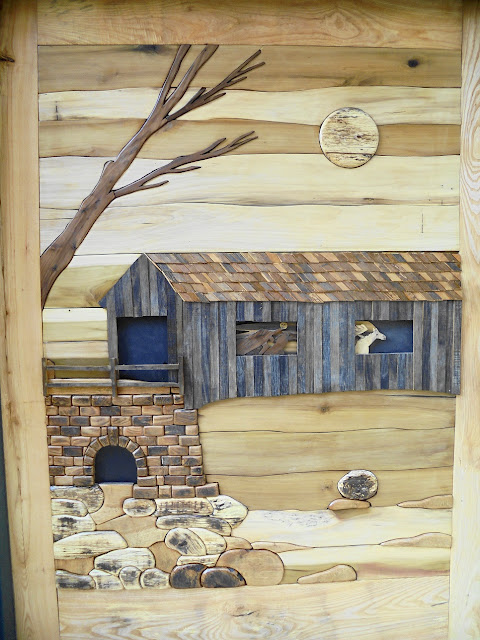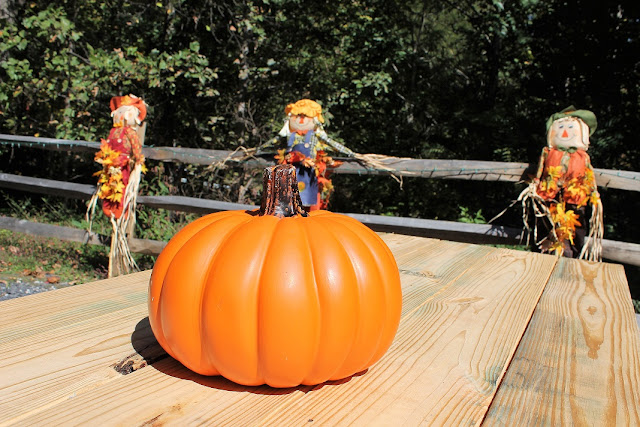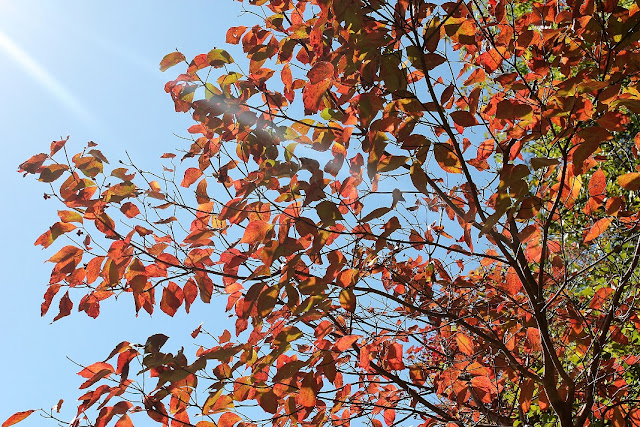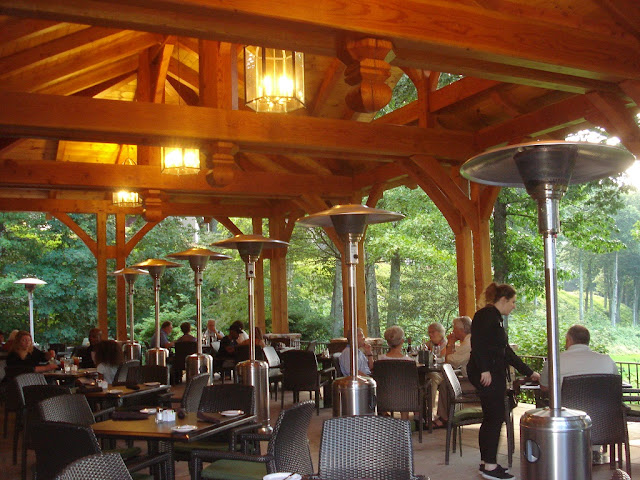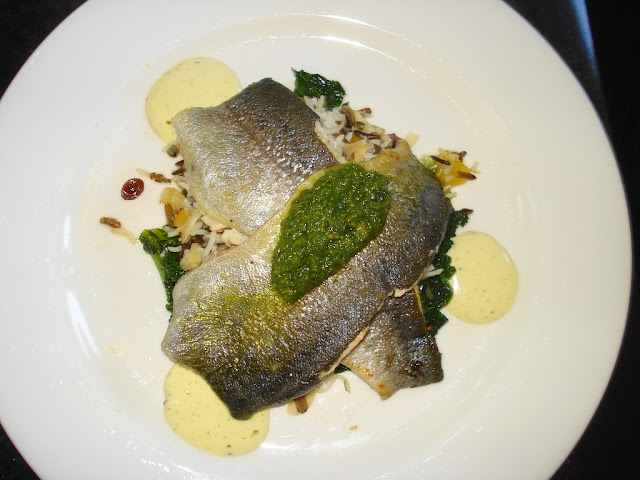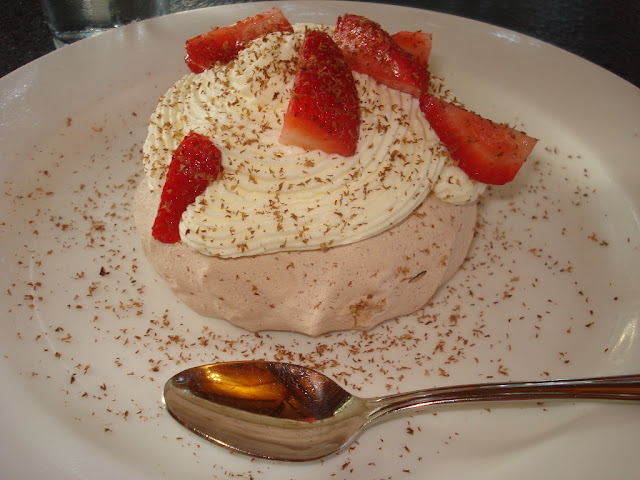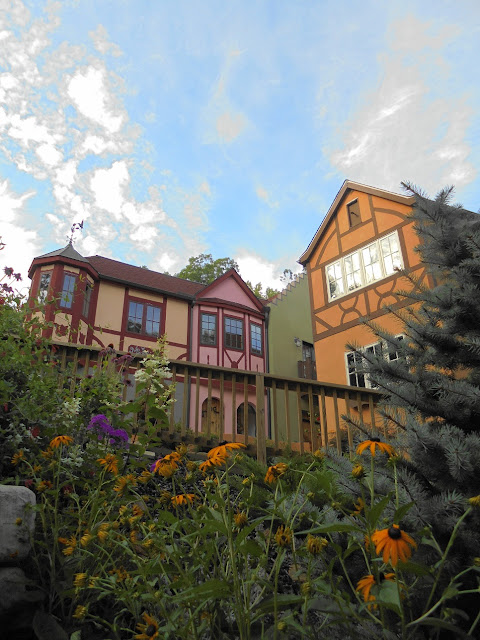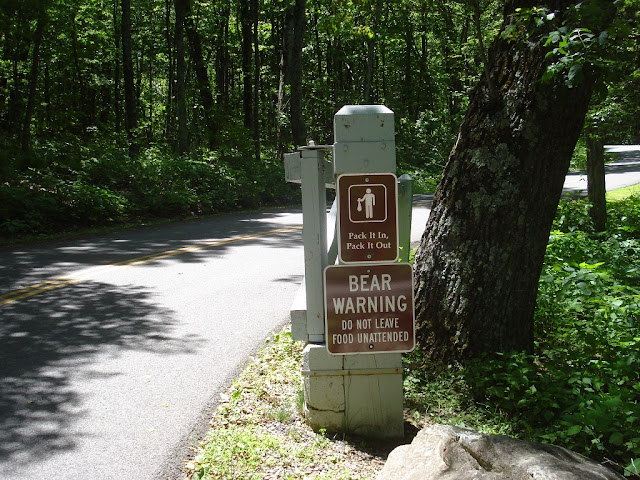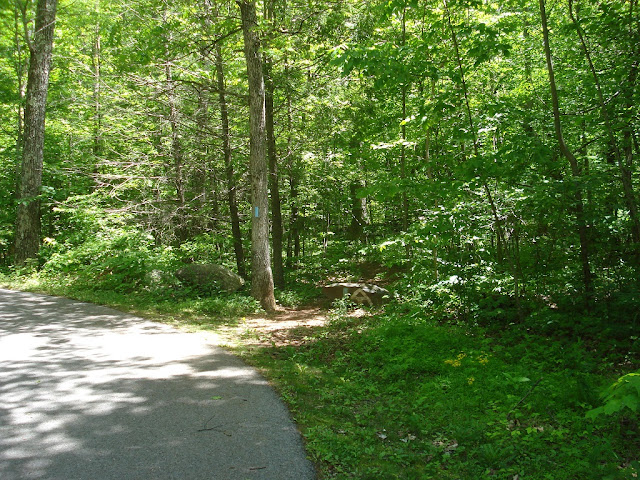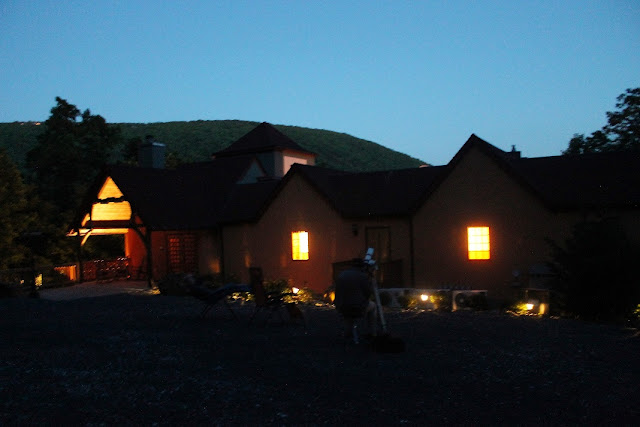A panoramic view from the top of the
one mile long hike up the mountain.
The hike is fairly steep, but not very
long, so a few breaks for water at one of the many benches along the
way, and the top is in sight. Most of the lower section of the trail
is very wide with gravel surface. About half way up, the trail
changes to a more narrow climb, with sections having steps or
climbing over large boulders. It can be a bit slick in the rain, so
wear good shoes with some traction. The best method is to take
someone much slower than yourself on the hike. That way you will get
plenty of rest waiting for them at each switch back of the trail and
they will do all the complaining for you through the steeper section.
By the time they reach you, you are fully rested to scramble up the
next section.
The reward for the hike is to get to
the top and enjoy the view out over the Shenandoah Valley . The
rocks are sloped at about 45 degrees, remnants of some ancient
collision between the continents a half billion or so years ago. The
rocks of the valley are limestone from a long lost ocean and they are
going under the igneous rocks of the Blue Ridge Mountains right below
your feet. The uplifting of the two layers are why the mountain top
rock are pointed up and to the west all along the Blue Ridge Parkway.
A view of the rock layers, a half
billion years in the making. These are the oldest mountains on
earth, predating all but the simplest life forms. By contrast, the
valley limestone is formed by a build up of complex life forms that
used calcium to make shells at a much later period. These mountains
have seen an ocean as big as the Atlantic Ocean, come and go from
this view, seen dinosaurs, and multiple ice ages. Monican Indians
roamed these mountains for a few centuries. Two hundred years ago,
Peter Jefferson (Thomas Jefferson's father) surveyed the area, giving
us such names as Devil's knob and backbone after finding it
unsuitable to farming. In the 1930s, work crews put in the Blue
Ridge Parkway and at that time, much of the land around had been
clear cut. It is a lot to take in in just one view.







